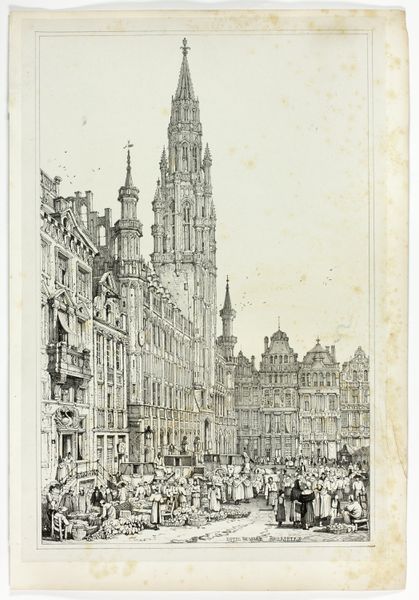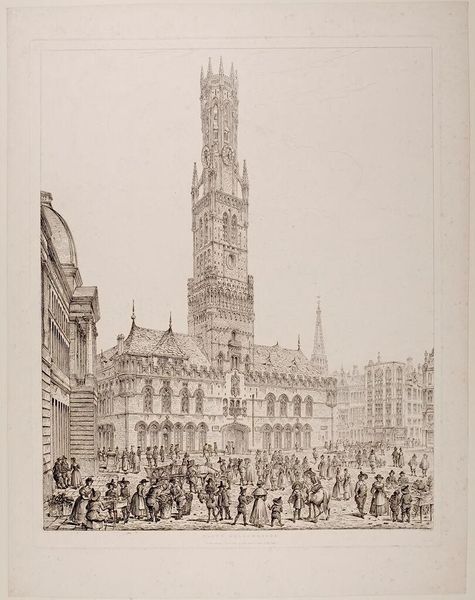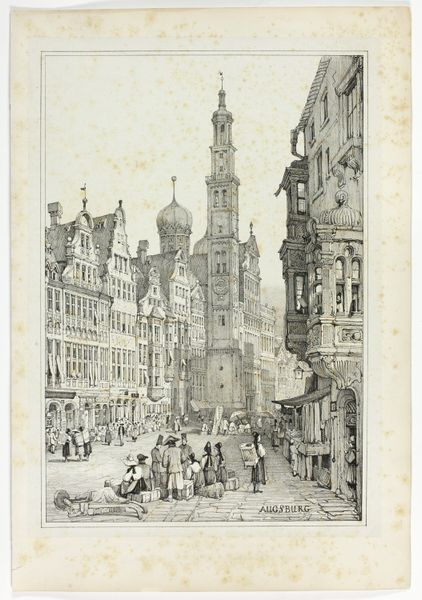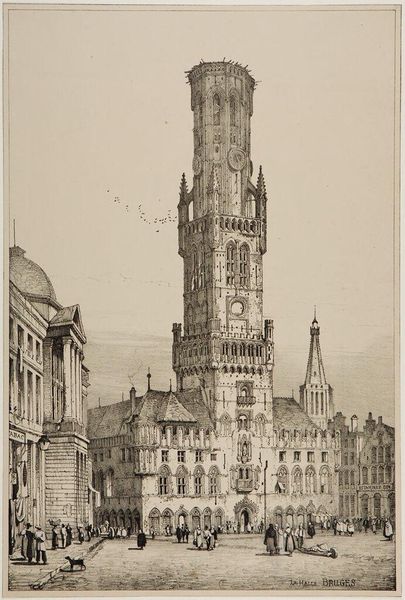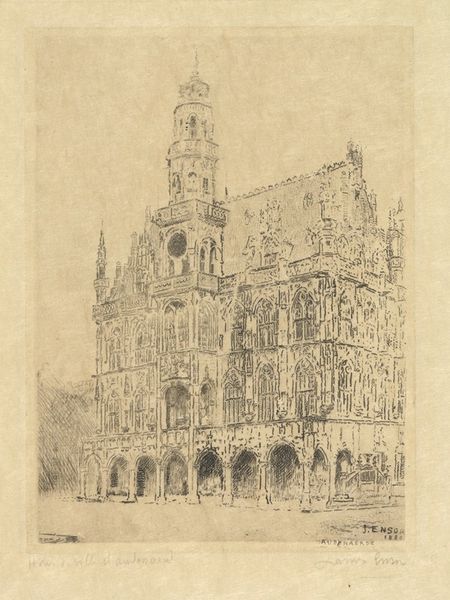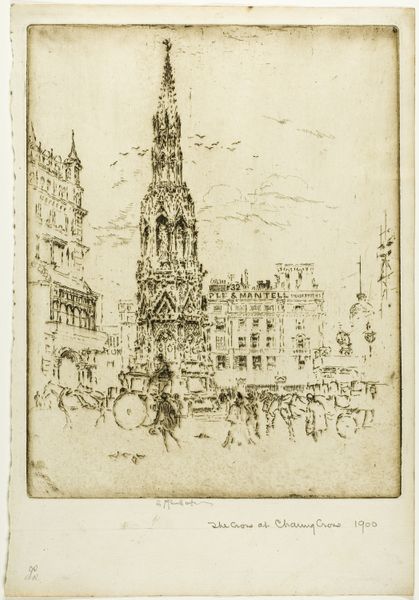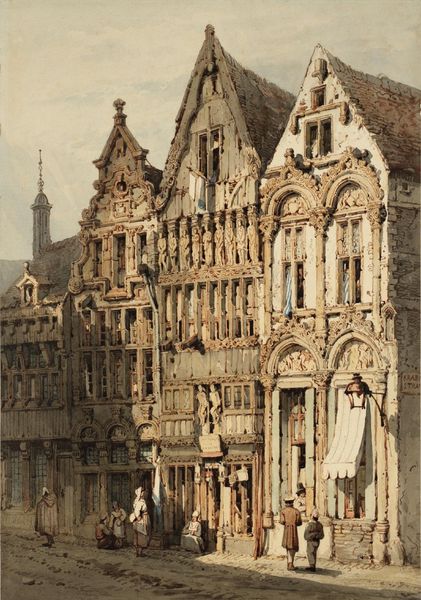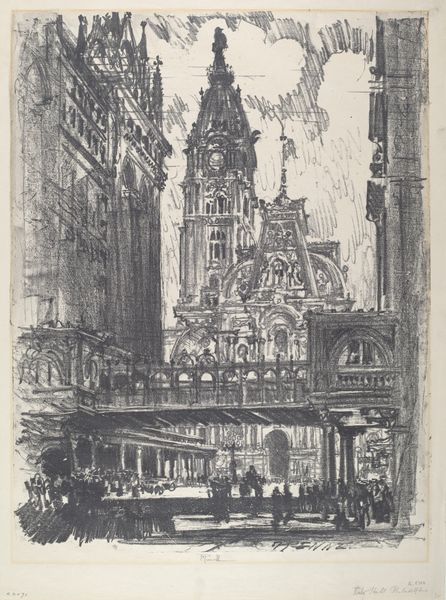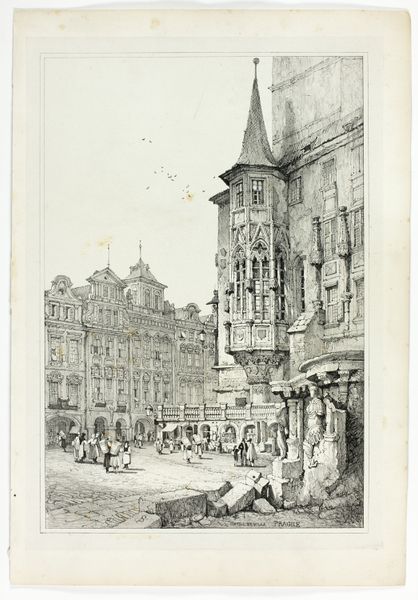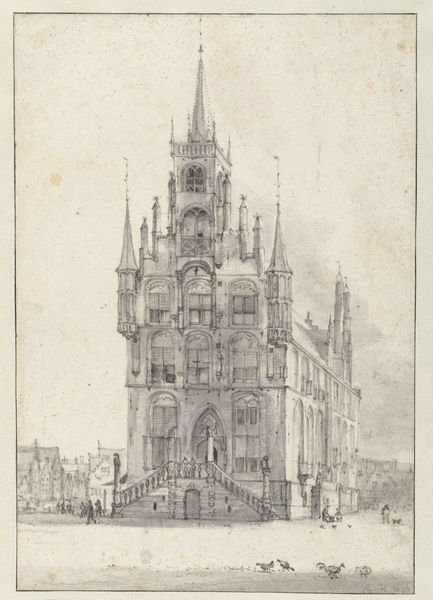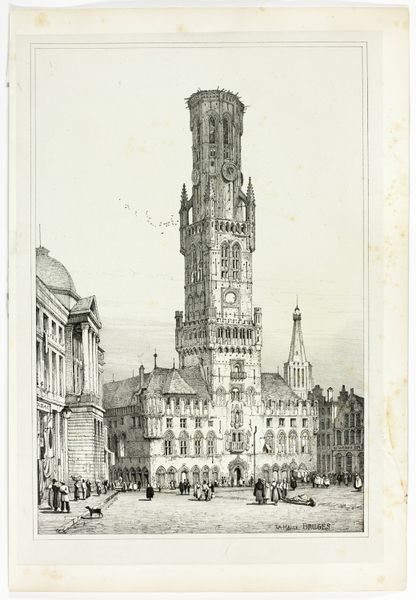
drawing, paper, pen, architecture
#
drawing
#
paper
#
oil painting
#
romanticism
#
line
#
pen
#
cityscape
#
mixed media
#
architecture
Copyright: Public domain
Curator: John Ruskin completed this drawing of the Hotel de Ville in Brussels in 1833. It is a drawing, composed of pen on paper. Editor: Wow. It's got such a strong, almost obsessive level of detail. It looks like he wanted to capture every last brick. Makes me feel slightly overwhelmed, almost anxious. Curator: Well, Ruskin was deeply interested in architecture and the social and political context in which it was created. He was also influenced by Romanticism which, especially when examining cityscapes, attempted to critique industrial progress. Perhaps this level of detail signifies an interest in that societal shift. Editor: You know, that makes total sense. There's definitely this looming feeling of density. Like, are these people ants, or are these buildings giant anthills? I am wondering about what the perspective means. Is it celebratory? Foreboding? Something in between? Curator: It's important to consider that this drawing predates photography, which further emphasizes Ruskin's careful approach to accurately documenting this historic site through visual means. How is he framing progress at this particular historical juncture? Editor: I get that. As a contemporary viewer, it's easy to see the layers of history within this drawing. You can see time physically manifesting through the texture. Sort of like memories imprinted in the architecture. Curator: Indeed. The use of line to depict the Hôtel de Ville not only captures the intricate details of the building but also emphasizes the importance of craftsmanship and architectural heritage at a time of rapid industrialization. It makes one think about which pasts get to be memorialized, and why. Editor: So many perspectives to consider! It’s kind of exciting to think about how a single piece of art, rendered in seemingly simple lines, can ignite such deep thinking about history, power, and change. Curator: Absolutely. This work becomes an opportunity to question not only urban space, but the foundations that shape cultural memory.
Comments
No comments
Be the first to comment and join the conversation on the ultimate creative platform.
